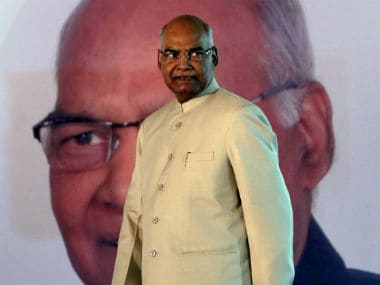One of the key highlights of President Ramnath Kovind’s Parliament speech on Thursday was the mention of collateral-free loans up to Rs 50 lakh to be given by the Narendra Modi government to entrepreneurs. To be sure, this announcement is not new. Collateral-free loans were one of the major promises in the BJP manifesto in the run-up to the 2019 Parliament polls. The others were an extension of the Kisan Yojana scheme to all farmers and pensions to small farmers, traders. It is important for the government to fulfill promises made before the polls and that’s what it is doing now. President Kovind also said the government will expand the scope of Pradhan Mantri Mudra Yojana, under which collateral-free loans of up to Rs 10 lakh are offered to small entrepreneurs, increasing the number of beneficiaries from 19 crore to 30 crore. These efforts to give a leg-up to the economy by way of lending a helping hand to small entrepreneurs are welcome but that should not come at the cost of another potential bad loan shock for the economy. This is something the Narendra Modi government should keep a close watch on. This is especially because much of the burden to roll out these collateral-free loans will be logically borne by the already crippled state-run banks. [caption id=“attachment_3838711” align=“alignleft” width=“380”]  File image of President Ram Nath Kovind. Reuters[/caption] Nearly Rs 10 lakh crore of gross NPAs has surfaced post-the painful NPA clean-up process in public sector banks carried out since 2015. Secondly, the economy is presently in a bad shape suffering from serious demand slump and high unemployment resulting in slowdown in economic activity on the ground. A significant part of the pain on the books of state-run banks is on account of loans given to micro, small and medium enterprises (MSMEs), that weren’t repaid on time. When fresh loans up to Rs 50 lakh is given with no guarantee and the entrepreneur fails to repay the amount in a slowing economy, this can impact the financial health of banks further. Questions will be raised about the government willingness to compensate banks in the event collateral-free loans are not repaid on time. Banks have already witnessed a substantial rise in the chunk of Kisan Credit Card (KCC) loans over the years. This, too, is a risky segment for banks as repayments on car loans are very less, just enough to keep the loan standard on the books of banks. The outstanding loans on KCC, an instrument conceived for Indian farmers to avail subsidised loans, has gone up at least four times between March 2011 and March 2018 as per the latest available data—from Rs 1.6 lakh crore to Rs 6.7 lakh crore. Also, these loans have more than doubled as a percentage of the total bank credit and nearly doubled as a percentage of the farm loans. As a percentage of gross bank credit, the KCC loans contributed merely 4.28 percent in March 2011 and, as a percentage of agricultural loan, it constituted 34.75 percent. In March 2018, the same percentage figures were 8.6 percent and 65 percent respectively. In other words, as a percentage of the total agriculture loans, the KCC loans have more than doubled in the last seven years or so and now constitutes a lion’s share of the agriculture loan portfolio. Finally, if the government has made up its mind to give away large collateral-free loans to entrepreneurs, it should put in place a strong mechanism to ensure this money is spent for the stated purpose. One big reason why NPAs have spiked in the books of PSBs in the post-crisis period is their inability to monitor the end use. Various research studies have shown that farm loans and MSME loans were widely used by borrowers for consumption-related purposes, not for what the money was given in the first place. Collateral free-loans, no matter how good the intent, are a high-risk idea in the Indian economy which is already fighting a slowdown phase.
If the government has made up it’s mind to give away large collateral-free loans o entrepreneurs, it should also work out a mechanism to make sure this money is spent well for the stated purpose
Advertisement
End of Article


)

)
)
)
)
)
)
)
)



